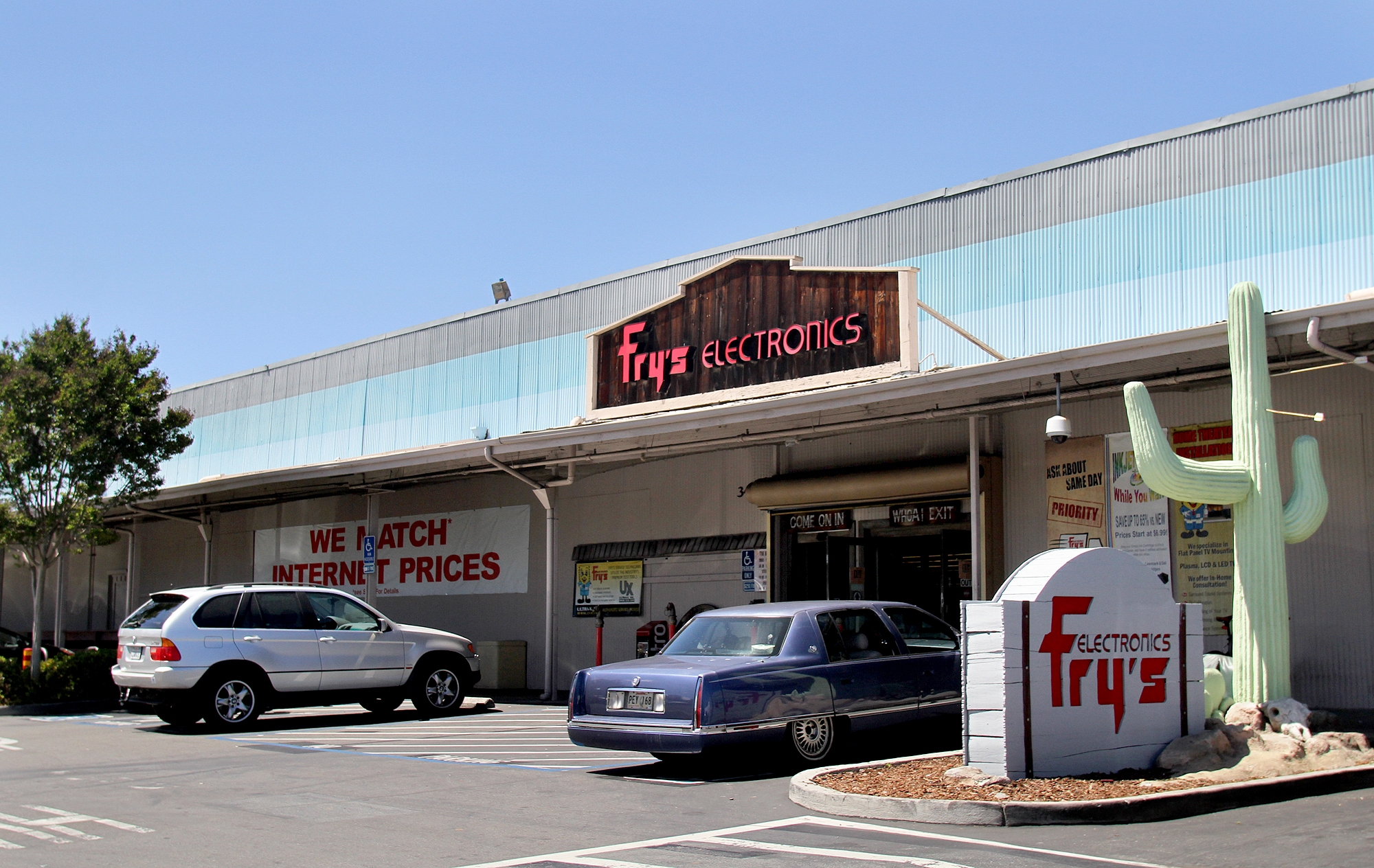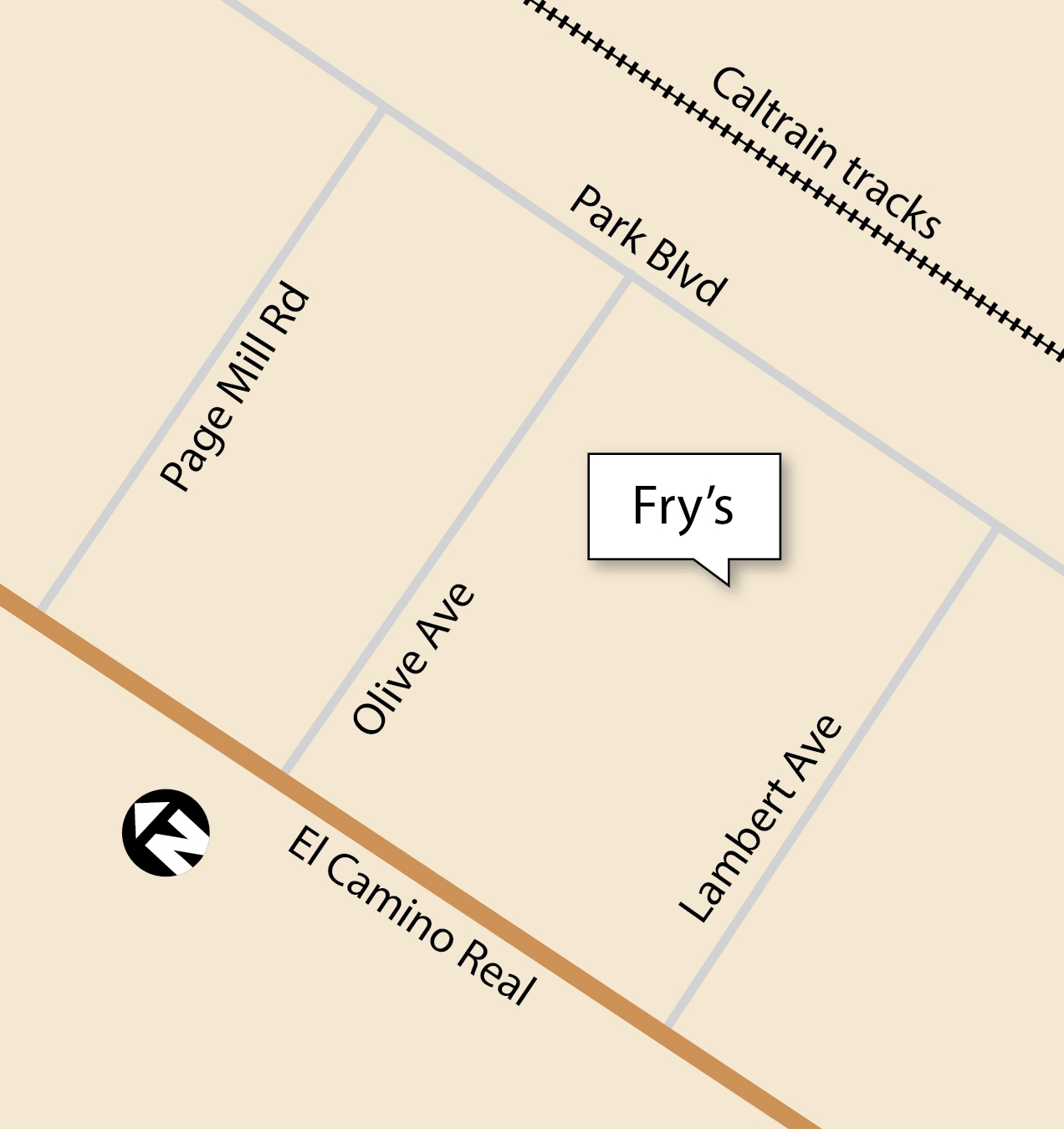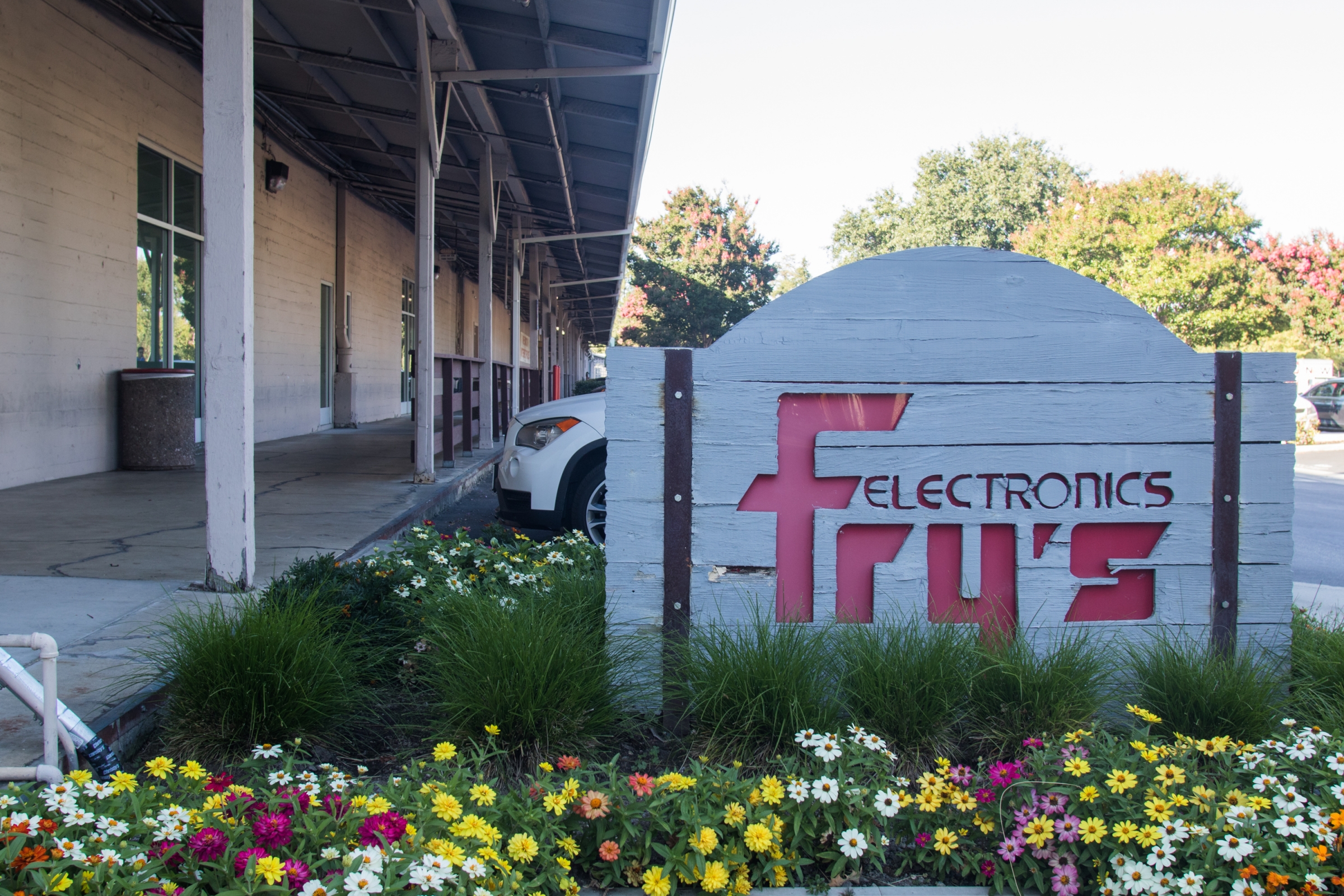With Palo Alto's plans for the Ventura neighborhood mired in uncertainty and facing heavy community opposition, the City Council agreed Monday to hit the pause button on the multiyear planning effort.
The council did not endorse any of the three options that were created by staff and consultants for the 60-acre section of Ventura, which is bounded by Page Mill Road, El Camino Real, Lambert Avenue and the Caltrain corridor. Instead, council members challenged the plan's economic assumptions, criticized its heavy reliance on office development and unanimously agreed to resume the debate over the area's future in the fall.
In discussing the North Ventura Coordinated Area Plan, the council struggled to find an alternative it likes. The menu of options included two alternatives that the city's consultants deemed to be economically unfeasible and a third option that most residents who worked on the plan found to be deeply undesirable.
All three alternative would add housing to Ventura, with the number of new residences ranging from 500 in Alternative 1, which offers the lightest touch, to 1,490 in Alternative 3, which has more height and density than the other two. The medium scenario, Alternative 2, has a "realistic capacity" of 1,170, according to staff.
A key difference between the alternatives is commercial space. While the first two alternatives focus on replacing commercial use with residential — either through gradual redevelopment as existing commercial projects get phased out or through replacement — the third alternative would add plenty of both. In addition to the influx of housing, Alternative 3 would add 83,800 square feet of commercial development to an area that already had 744,000 square feet.
For most members of the North Ventura Coordinated Area Working Group, a 14-member panel of Ventura residents, property owners and other stakeholders who worked on the plan over the past two years, the preponderance of office space proved to be a deal breaker. Only one member, Gail Price, supported Alternative 3. Meanwhile, the most popular option — Alternative 2 — received only four votes of support from the Working Group.
The office-heavy nature of Alternative 3 made it a tough sell for many Ventura residents and Working Group members. Angela Dellaporta, a member of Working Group, argued Monday that the high level of office space "flies directly in the face of the majority of the Working Group members and also the wishes and needs of residents who want housing and parks — not more offices, not more traffic."
Jonathan Brown, a Ventura resident, agreed and said he strenuously opposes Alternative 3B — a variation of Alternative 3 that was backed by the Planning and Transportation Commission and by city planning staff. The menu of options, he argued, needs to go back to the drawing board.
"It's not fair to shove all of Palo Alto's housing goals into one area of the city — one of the most underserved in all of Palo Alto," Brown said.
The council, for its part, refrained from voting on any of the alternatives on Monday. Instead, council members offered their concerns about the proposed plan and staff's economic analysis, which found that only the third alternative is likely to materialize. Vice Mayor Pat Burt questioned the decision by the consultant, Strategic Economics, to predicate its economic analysis on the assumption that a property owner would have to buy land to develop homes and offices in Ventura. The equation changes, Burt argued, when one considers scenarios in which existing property owners are developing the site.
While the analysis provides one key data point, the city should be "looking at more dynamic modeling on feasibility," Burt said.
Numerous residents and housing advocates supported the staff recommendation and urged the council to support Alternative 3B, office growth notwithstanding. Price, who serves as board president of the nonprofit group Palo Alto Forward, said the alternative would provide "the greatest variety of community benefits and economic vitality."
"It is a unique opportunity to build many homes close to services, shopping, transit, additional jobs, which would set new families and low- and moderate-income families … up for success," Price said.
While the council has long viewed Ventura as a prime area for growth and redevelopment, staff and council members acknowledged that they have only limited power over the neighborhood's future. Alternatives 2 and 3 bank on redeveloping the sprawling site at 340 Portage Ave., former home of Fry's Electronics, either in part (Alternative 2) or in its entirety (Alternative 3). The property owner, The Sobrato Organization, has indicated that it has no plans to redevelop the former Fry's Building or to switch its use from commercial to residential.
At the same time, Sobrato has proposed a townhome project at a site next to 340 Portage Ave. If that project is approved, the "realistic capacity" for housing in the 60-acre site would instantly drop and would now range from 450 residences (Alternative 1) to 1,000 (Alternative 3).
Some council members also suggested Monday that they would oppose demolishing and replacing the Fry's Building, which was constructed by Thomas Foon Chew in 1918 and which served in 1920 as one of the largest canneries in the nation. Council members Greer Stone, a history teacher at Gunn High, said it's critical for the city to offer real life examples of immigrants' contributions to Palo Alto.
"This is a rich history worth preserving and to really just destroy it because developers say that they need to add additional office space to make housing pencil out — I think is really just a disservice to our city and the rich historical contributions of our immigrant and Chinese community," Stone said.
Council member Alison Cormack was more receptive to the staff proposal, which she called "perfectly rational" given the economic analysis. Like her colleagues, however, she acknowledged that the process remains very much in flux.
"It feels very awkward to be where we are, having spent so much time and money and having changes on the part of one of the major property owners," Cormack said.





Comments
Registered user
Barron Park
on Jun 15, 2021 at 4:41 am
Registered user
on Jun 15, 2021 at 4:41 am
Throughout the North Ventura Coordinated Area Plan (NVCAP) process I've advocated for a particular land use design pattern which I think would satisfy many of the criteria for a successful plan. I have modeled this design pattern in the hopes that it may provide the council and community with a successful resolution of the NVCAP challenge.
You can see images of this proposal and a more detailed description here:
Web Link
In a nutshell, I modeled a few multi-family residential and mixed use buildings in a form I call the Garden Apartment and arranged them within the North Ventura area. The design is pedestrian oriented, humanist and ecologically beneficial. It brings significant additional housing and park space to the area along with a mix of retail, commercial, and community space, all within a human-scale envelope which respects adjacent single family residences.
The essential form of the Garden Apartment is a building terraced such that every occupant has access to rooftop gardens. Its animating principle is that every person should have a home and access to nature.
This proposal is mid way between the medium and high density alternatives, and has a much reduced impact particularly on neighboring single-family residences. It offers over 1,400 bedrooms, 1M sq.ft. Residential, 1M sq.ft. Open Space, and 334K sq.ft. Commercial space (a net decrease of 50K sq.ft. from existing uses). It preserves the most historically significant and visually interesting portions of the Historic site: the section of the cannery building with the monitor roofs, and the ranch house on Ash and Portage. From a bird's eye view, most surfaces are naturalized open space.
Keep in mind that the dimensions, spacing and distribution of residential vs commercial could be adjusted to best meet the communities needs.
If you like this proposal, please inform the council at City.Council@cityofpaloalto.org or the staff at NVCAP@cityofpaloalto.org
Registered user
Embarcadero Oaks/Leland
on Jun 15, 2021 at 7:23 am
Registered user
on Jun 15, 2021 at 7:23 am
The proposal described above is interesting and well worth the look. SO much nicer than the usual unimaginative boxes going up everywhere.
As for the rest of the session, I wonder how much it cost to waste everyone's time with this and to so blatantly ignore all the time and effort put in by the Working Group. Yet again, the "Planning" staff was unable to answer basic questions, laughably classified parking strips as "parklets" and couldn't answer how they'd enforce a one-car-per-housing unit limit, if that limit was even legal and what penalties (if any) they'd impose for violations and where the 2d car would park beyond saying, "Uh, I suppose on surrounding streets."
Yet again "Planning" and the usual suspects advocated for the developer, pushing offices instead of housing, including Ms "No Traffic Here" Kniss who began her 2 minutes with a gratuitous dig at the Mayor. At least this time, their reports and arguments were so bad even their council acolyte had to reject all the proposed alternatives. Unanimously.
Registered user
Barron Park
on Jun 15, 2021 at 8:48 am
Registered user
on Jun 15, 2021 at 8:48 am
I just wanted to clarify for anyone who watched my public comment presentation to Council (watchable here: Web Link and read my description above and noticed a discrepancy: last night I said my proposal had a net change of ~80K sq.ft. but above I wrote that it had a net change of -50K sq.ft. of Commercial space. The reason is that in my initial calculation I included in the commercial space an outdoor area under an overhang: a veranda which surrounds the ground-floor retail where dining tables and shop displays could be outside but protected from the elements. But, properly, only fully enclosed and conditioned spaces are included in square footage so I corrected my calculation to more accurately reflect the renderings. I was surprised actually what a big difference that little tweak made on the total net change in commercial space, +80K to -50K. Total the calculated commercial space in the buildings I modeled went from 464K sq.ft. to 334K sq.ft. by not including the veranda, compared to 385K sq.ft. in the existing buildings replaced by my model. It goes to show that even little tweaks spread over a large enough set of buildings can add up to a big difference.
Registered user
Ventura
on Jun 15, 2021 at 9:48 am
Registered user
on Jun 15, 2021 at 9:48 am
The Cedric de La Beaujardiere design is far too compressed and appears to be promoting maximum usage of every available square inch in the neighborhood.
People do not want to live like caged rats and privacy considerations also enter into the picture.
Ventura is one of the few remaining mixed-use neighborhoods in Palo Alto with various specialty repair shops and older homes dating back to the 1940s.
Many Ventura residents would prefer to keep things this way and it is not for the PACC or other Palo Alto neighborhood residents to advocate unnecessary changes or chime-in on an established residential environment that is none of their business.
Maybe consider building those ludicrous spaceship designs somewhere else (e.g. Barron Park) and let the designer embrace his Frank Lloyd Wright leanings in some other way.
We like our old 2BR/1B house and so do most of our neighbors.
Where else can one pay $2M for a fixer-upper other than in Palo Alto?
Downtown North
Registered user
on Jun 15, 2021 at 10:32 am
Registered user
on Jun 15, 2021 at 10:32 am
Due to repeated violations of our Terms of Use, comments from this poster are automatically removed. Why?
Registered user
Another Palo Alto neighborhood
on Jun 15, 2021 at 11:50 am
Registered user
on Jun 15, 2021 at 11:50 am
Probably best decision since we have no idea what type of things we will need in a couple of years' time. Pandemic recovery will show a different type of normal to the status quo we had before. Nothing can be decided on by prepandemic norms.
Registered user
Meadow Park
on Jun 15, 2021 at 11:55 am
Registered user
on Jun 15, 2021 at 11:55 am
Since I have been following this story, two thoughts continually occur to me:
1. The pandemic has reshaped how we think about work spaces and working from home. Why continue to plan for office space the way we used to when we don't even know how we will emerge from the situation that obtains today? (From an infectious diseases point of view, we are lucky indeed that we went 102 years between worldwide pandemics. Instead of returning to a state of denial today, June 15, we should be planning for the next one.)
2. Why is housing construction forever and always held hostage to commercial development?
Registered user
Evergreen Park
on Jun 15, 2021 at 1:09 pm
Registered user
on Jun 15, 2021 at 1:09 pm
I agree with vmshadle. There are 2 brand new office buildings built on Park blvd near by Fry's site not yet occupied. I wonder how quickly those building will be filled. We shall see.
Registered user
Evergreen Park
on Jun 15, 2021 at 1:11 pm
Registered user
on Jun 15, 2021 at 1:11 pm
Such a sad abdication of responsibility given the importance of timely action to address our broad-spectrum housing crisis.
Registered user
Crescent Park
on Jun 15, 2021 at 1:16 pm
Registered user
on Jun 15, 2021 at 1:16 pm
The residents of Ventura should have the final say and the PACC and developers go against their wishes, a class action lawsuit can easily be initiated.
And besides, the City of Palo Alto is no stranger to an ongoing threat of lawsuits.
Registered user
Barron Park
on Jun 15, 2021 at 2:42 pm
Registered user
on Jun 15, 2021 at 2:42 pm
The Council gave a verbal 'spanking' to the staff and to the consultant. The staff got theirs by holding meetings with a selected residents group and then disrespecting them by pushing a plan that the residents group disliked. The consultant got theirs by an absence of creative thinking in the housing design and layout (their solution to all problems: increase the height and add more floors and reduce the parking) and for an economic analysis based on questionable assumptions. The questioning by the Council was appropriately withering and brutal. The disagreement is over priorities: the staff pushed a proposal that would support subsidies for affordable housing but would include more offices (and more jobs), and the Council, while welcoming more housing, wanting a proposal that would reduce the jobs/housing imbalance.
Registered user
Midtown
on Jun 15, 2021 at 4:32 pm
Registered user
on Jun 15, 2021 at 4:32 pm
Thanks for having common sense, City Council! Why must we build more offices when the offices we have are lying vacant? Does not make any sense. Plus, if we build more offices, doesn't that also mean we will be required to have even more housing?? Let's fill the offices we have before building more. People are working remotely now; office space is not the necessity it once was.
Registered user
Crescent Park
on Jun 15, 2021 at 4:42 pm
Registered user
on Jun 15, 2021 at 4:42 pm
As someone recently suggested, the property should be condemned. The owner should not be unhappy: its a good deal with significant appreciation and tax free money. Planning can go on forever but saving the 1918 cannery?
Get on with it!
Registered user
Embarcadero Oaks/Leland
on Jun 15, 2021 at 5:13 pm
Registered user
on Jun 15, 2021 at 5:13 pm
"The Council gave a verbal 'spanking' to the staff and to the consultant."
Yup. And how did they respond to that and/or specific points of criticism? Planning Director Lait said, "Oh gee, it's late." At 8:30PM when meetings usually run later than 11PM. When told to defend some of their sillier assumptions, "Oh, gee. We don't have the budget for more analysis."
How much did their consultant cost? How much did staff time cost? How much time was wasted for the PTC, CC and Working Group meetings?
The same questions apply to Staff's failure to define "medical retail" re Town & Country both before starting the review process and after they were so directed by the City Council. Or to notice there were problems with the Solar Permitting process until PAO's excellent report broke.
For this we pay big bucks and have to sacrifice libraries, police protection, fire protection and other valued services??
Registered user
Duveneck/St. Francis
on Jun 15, 2021 at 8:24 pm
Registered user
on Jun 15, 2021 at 8:24 pm
Whatever develops, hopefully it will be of benefit to the current Ventura residents as well.
As Palo Alto city residents, they deserve the same consideration that the other more affluent neighborhoods receive.
Ventura is one of the last of the pre-snob neighborhoods in Palo Alto. College Terrace, Evergreen, Midtown, Charleston Meadows, Mayfield, and Barron Park can also hold that distinction.
The northerners could take a few cues.
Registered user
Crescent Park
on Jun 16, 2021 at 8:29 am
Registered user
on Jun 16, 2021 at 8:29 am
Why is Jonathan Lait still employed by the city of Palo Alto? His performance is usually cringe worthy; not impressive. His "facts" are frequently anything but. He has been called out by the public on many issues; yet, he is still here.
When will the City Council get tired of his tilt towards developers at the cost of residents?
Palo Alto deserves much better. Thank you
Registered user
Embarcadero Oaks/Leland
on Jun 16, 2021 at 9:07 am
Registered user
on Jun 16, 2021 at 9:07 am
@Rita, great question.
Anyone following the Solar Permitting debacle saw he was clueless about the problems/ complaints until the Palo Alto Weekly's report. How can a "manager" not notice no applications had been approved -- for months! As always, something else was to blame -- the pandemic, email outages that went unnoticed for months, vanishing applications ...
His solution to the problem employee: Double-teaming inspectors so "they can learn from each other" -- as if poor performers should be teaching others how to abuse contractors and applicants! Then after doubling the cost of inspections by double-teaming he complains he's got no money to do "analysis"!
Someone should analyze what his "performance" costs us.
Registered user
Barron Park
on Jun 17, 2021 at 9:17 pm
Registered user
on Jun 17, 2021 at 9:17 pm
Hmmm. Seems to me it's Sobrato, not the city council, that decides this one.
Registered user
Downtown North
on Jun 17, 2021 at 9:45 pm
Registered user
on Jun 17, 2021 at 9:45 pm
"Ventura is one of the last of the pre-snob neighborhoods in Palo Alto. College Terrace, Evergreen, Midtown, Charleston Meadows, Mayfield, and Barron Park can also hold that distinction.
The northerners could take a few cues."
Penelope Roberts, that's a pretty unkind thing to say. Every neighborhood is different and each resident in this town is unique.